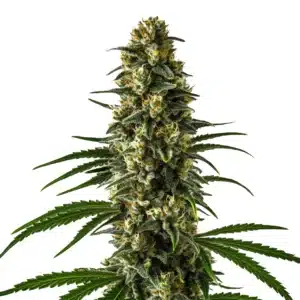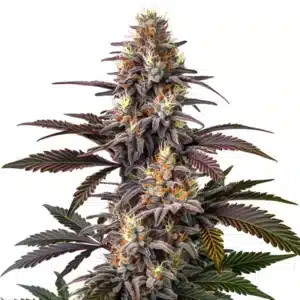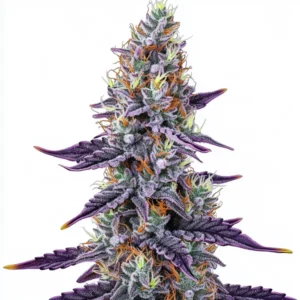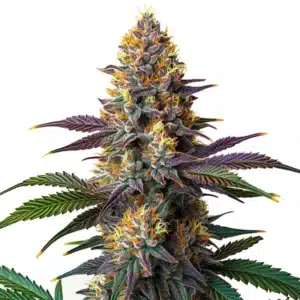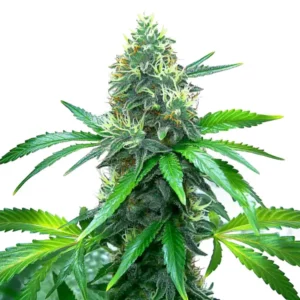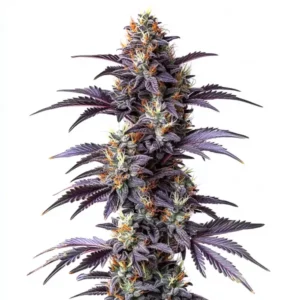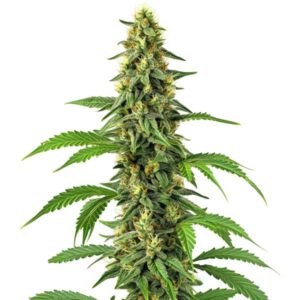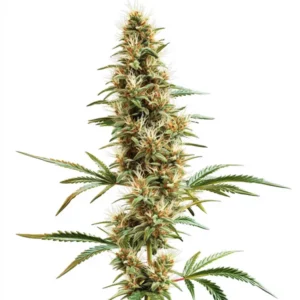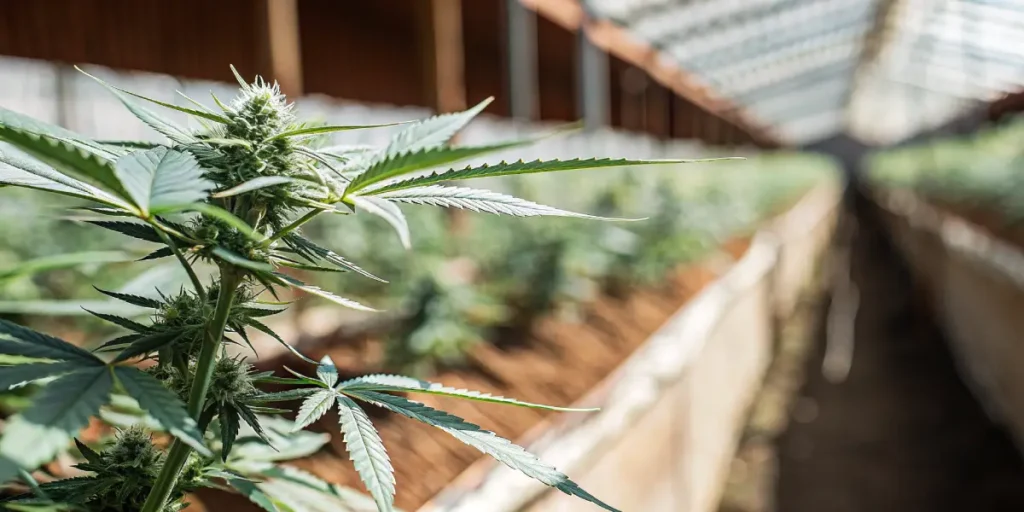
How do Laticifers Protect Cannabis?
In the world of cannabis cultivation, laticifers play a crucial role in plant defense. These specialized cells or ducts produce latex, a milky fluid that serves as a natural defense mechanism. When cannabis plants face threats from pests or pathogens, laticifers spring into action, offering protection that is both fascinating and effective.
Laticifers in cannabis are integral to plant immunity. They secrete a sticky substance that can deter pests, making it harder for them to damage the plant. This secretion acts as a barrier, preventing harmful organisms from penetrating the plant tissues. For both novice growers and seasoned cultivators, knowing how laticifers protect cannabis can lead to healthier plants and better yields.
Recommended Strains
Blue Dream
|
|
THC | 17% - 24% (Medium) |
|
|
Type | Feminized |
|
|
Yield | High |
|
|
Phenotype | 50% Indica / 50% Sativa |
Girl Scout Cookies
|
|
THC | 18% - 25% (Medium) |
|
|
Type | Feminized |
|
|
Yield | High |
|
|
Phenotype | 60% Indica / 40% Sativa |
One of the most exciting aspects of laticifers is their role in cannabis defense. They contribute to the plant’s ability to withstand various threats through a combination of physical and chemical deterrents. By producing a latex that can trap or repel pests, laticifers ensure that the plant remains robust and less susceptible to external pressures.
The Science Behind Laticifers
What exactly are laticifers? These are specialized cells found in some plants, including cannabis. They form a network that produces latex, a fluid filled with compounds that can be toxic or repellent to pests. In cannabis, laticifers are strategically located near the surface of stems and leaves.
This placement allows laticifers to act quickly when the plant is damaged. When a pest bites or a pathogen invades, laticifers release their latex, creating a protective barrier. This immediate response is vital for the plant’s survival, as it prevents further damage and infection.
Laticifers not only provide immediate protection but also contribute to the long-term resilience of the plant. By constantly producing and storing latex, they ensure that the plant is always ready to defend itself when needed. This continuous state of readiness is a testament to the importance of laticifers in cannabis plant immunity.
Moreover, the presence of laticifers influences the overall health of the plant. Healthy laticifers can enhance the vigor of cannabis, making it more resistant to environmental stresses. By knowing the science behind laticifers, growers can better appreciate their indispensable role in maintaining plant health and productivity.
Chemical Defense Mechanisms
Cannabis latex and pest protection go hand in hand. The latex contains a mix of chemicals that are unappealing or harmful to many pests. This chemical cocktail can vary between cannabis strains, offering different levels of protection. For example, some strains might produce a more potent latex than others.
The chemicals found in cannabis latex can disrupt the feeding patterns of insects. By interfering with their ability to eat or digest plant material, the latex effectively reduces pest populations. This natural form of pest control is invaluable for growers looking to maintain their crops organically.
Besides to deterring pests, the chemical components of latex can also act as a signaling mechanism. When laticifers release their latex, it can trigger other defensive responses within the plant, amplifying the overall protective effect. This synergistic action underscores how laticifers protect cannabis through a complex interplay of chemical signals.
Furthermore, ongoing research continues to explore the specific compounds within cannabis latex that contribute to its effectiveness. Knowing these chemicals can lead to innovations in natural pest control strategies, providing growers with more tools to enhance the resilience of their crops through laticifer secretions.
Physical Barriers Against Pests
Beyond chemicals, laticifers also provide physical barriers. The sticky nature of the latex can trap small insects, preventing them from moving freely on the plant. This sticky trap is especially effective against crawling insects that might otherwise cause significant harm.
By immobilizing pests, laticifers reduce the chances of them spreading to other parts of the plant. This containment is crucial during early infestations, as it limits the damage and allows the plant to recover more quickly.
The physical barrier created by latex not only immobilizes pests but also discourages them from returning. As insects become trapped, they emit distress signals that can deter other pests from approaching the plant. This reinforces the function of laticifers in cannabis defense by creating an inhospitable environment.
Additionally, the physical properties of latex can aid in sealing wounds caused by pest attacks or mechanical damage. By covering these open areas, laticifers help prevent secondary infections and promote healing, further demonstrating how laticifers protect cannabis through multiple defense mechanisms.
Promos & Deals
Choosing the Right Cannabis Strains
Different cannabis strains have varying levels of natural defenses. Some strains are more adept at utilizing their laticifers, offering better protection against pests and diseases. For growers, selecting the right strain can make a significant difference in crop health.
For instance, the Blue Dream strain is known for its resilience. Its laticifers produce a robust latex that can deter a wide range of pests, making it a favorite among cultivators looking for reliable protection.
Knowing the genetic traits of a strain can provide insights into its defensive capabilities. Strains with a history of strong laticifer activity often have a track record of thriving in challenging environments. This makes them an excellent choice for growers seeking dependable cannabis protection through laticifer secretions.
When selecting strains, growers should also consider their specific cultivation conditions. Environmental factors can influence how effectively laticifers function, so choosing strains that are well-suited to local climates and pest pressures can enhance the overall success of the crop.
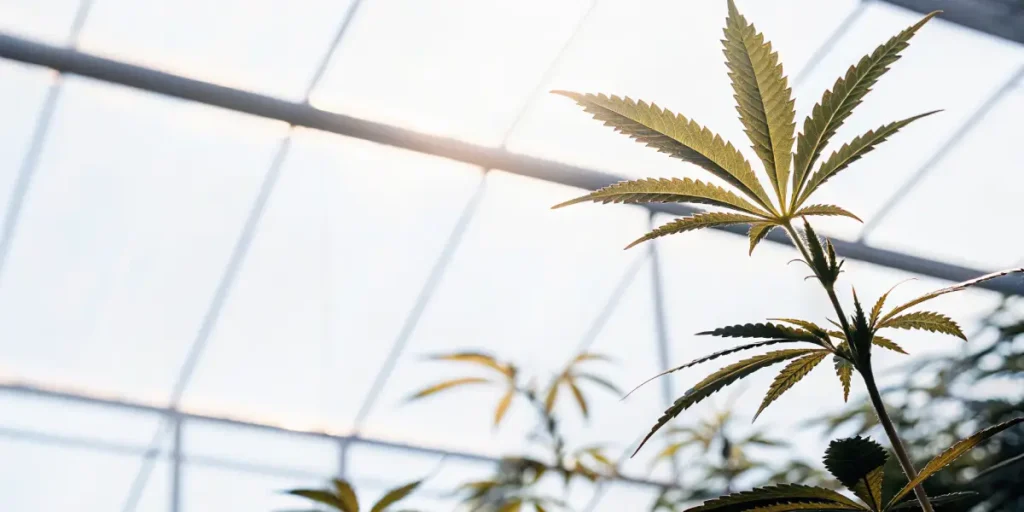
Strains with Strong Laticifer Activity
The Girl Scout Cookies strain is another excellent choice. It has a well-documented ability to produce protective latex, thanks to its active laticifers. This strain can be a smart pick for those dealing with common cannabis pests.
Another popular option is the OG Kush strain. Known for its potent effects, OG Kush also benefits from strong laticifer activity. Its latex secretion can effectively deter pests, providing peace of mind for growers focused on organic practices.
Incorporating strains with robust laticifer activity into a cultivation strategy can reduce reliance on chemical pesticides. This not only supports sustainable practices but also enhances the quality of the harvest by minimizing chemical residues. How laticifers deter cannabis pests is a key consideration for environmentally conscious growers.
Additionally, experimenting with different strains can reveal new insights into the effectiveness of laticifers. By observing how various strains respond to pest pressures, growers can refine their selection criteria and optimize their cultivation practices for maximum plant health and yield.
Maintaining Plant Health Through Laticifers
Regular monitoring of your cannabis plants can help you gauge the effectiveness of their laticifers. Check for signs of latex secretion and observe how well your plants recover from pest attacks. Healthy laticifers will ensure that your plants remain vigorous and productive.
Incorporating preventive measures can enhance the natural defenses provided by laticifers. For instance, maintaining proper soil health and ensuring adequate nutrition can support laticifer function. Healthy plants are better equipped to produce the necessary latex for protection.
A holistic approach to plant care, which includes optimizing environmental conditions and minimizing stress, can further support the function of laticifers. By creating a conducive environment, growers can enhance the effectiveness of laticifers in cannabis plant immunity.
Furthermore, staying informed about the latest research and developments in cannabis cultivation can provide new strategies for enhancing laticifer function. As our knowing of these vital structures grows, so too does our ability to leverage them for improved plant health and resilience.
Enhancing Laticifer Function
Consider integrating companion planting into your cultivation strategy. Some companion plants can repel pests or attract beneficial insects, reducing the burden on your cannabis plants’ laticifers. This holistic approach supports plant health from multiple angles.
Regular pruning and maintenance can also boost laticifer effectiveness. By removing damaged or dead plant material, you prevent pests from establishing a foothold. This proactive care encourages strong laticifer activity, safeguarding your plants.
Enhancing the function of laticifers requires a commitment to consistent and attentive plant care. Practices such as mulching and maintaining appropriate moisture levels can reduce stress on plants, allowing laticifers to operate at peak efficiency.
By fostering a thriving ecosystem around your cannabis crop, you can naturally bolster the function of laticifers in cannabis defense. Encouraging biodiversity and minimizing chemical interventions create a balanced environment where laticifers can excel in their protective duties.

FAQs: How do laticifers protect cannabis?
What are laticifers, and how do they work in cannabis plants?
Laticifers are specialized cells in certain plants, including cannabis. They produce latex, a milky fluid that serves as a defense mechanism. In cannabis, laticifers are strategically positioned to release latex when the plant is damaged or threatened by pests or pathogens.
When activated, laticifers secrete latex that acts as both a physical and chemical barrier. This sticky substance can trap insects and contains compounds that deter or harm pests. By doing so, laticifers play a vital role in maintaining the plant’s health and vitality.
The strategic positioning of laticifers near the plant’s surface ensures a rapid response to threats. This quick action is crucial for minimizing damage and preserving the overall health of the plant, highlighting how laticifers protect cannabis efficiently.
Knowing the dual nature of laticifer defenses—both physical and chemical—enables growers to appreciate their comprehensive protective capabilities. This knowledge can inform cultivation practices aimed at maximizing the benefits of laticifer activity.
How do laticifers deter cannabis pests?
Laticifers deter pests through a combination of physical entrapment and chemical deterrence. The sticky latex can immobilize small insects, preventing them from causing further damage. This physical barrier is particularly effective against crawling and feeding pests.
Besides to trapping pests, the latex contains chemicals that can disrupt the feeding and digestive processes of insects. These compounds make the plant less palatable or toxic to pests, reducing their numbers and limiting their impact on the plant.
The dual-action approach of laticifers in pest deterrence not only protects individual plants but also helps maintain the overall health of the crop. By reducing pest populations, laticifers contribute to a more stable and productive growing environment.
This natural pest control method aligns with organic cultivation principles, providing an attractive alternative to chemical pesticides. Knowing how laticifers deter cannabis pests can lead to more sustainable and environmentally friendly growing practices.
Can laticifers protect cannabis from diseases?
Yes, laticifers contribute to cannabis plant immunity by protecting against certain diseases. The latex they produce can coat plant surfaces, creating a barrier that inhibits the growth of pathogens such as fungi and bacteria.
While laticifers are not a cure-all, they enhance the plant’s natural defenses. By preventing pathogen entry and spread, laticifers help maintain plant health, reducing the likelihood of disease outbreaks in your crop.
The protective barrier formed by latex can be particularly effective during periods of high humidity or when plants are vulnerable to disease. By acting as a preventive measure, laticifers strengthen the plant’s ability to withstand adverse conditions.
Ongoing research into the specific interactions between laticifers and pathogens continues to reveal new insights. As we learn more about these dynamics, growers can refine their strategies to harness the full potential of laticifers in cannabis disease prevention.
Are some cannabis strains better at using laticifers than others?
Different cannabis strains exhibit varying levels of laticifer activity. Some strains, like Blue Dream and Girl Scout Cookies, are known for their robust latex production, offering enhanced protection against pests and diseases.
When selecting a strain, consider its natural defense capabilities. Strains with strong laticifer activity can provide a natural advantage, reducing the need for chemical interventions and supporting organic cultivation practices.
Genetic diversity within cannabis strains allows for a wide range of defensive traits, including laticifer activity. By exploring different strains, growers can find those that best suit their specific environmental conditions and pest challenges.
Collaborations between breeders and researchers continue to produce new strains with optimized laticifer function. These advancements provide exciting opportunities for growers to enhance cannabis protection through laticifer secretions.
How can growers support laticifer function in cannabis plants?
Growers can support laticifer function by maintaining overall plant health. This includes ensuring proper nutrition, soil health, and environmental conditions. Healthy plants are better equipped to produce the necessary latex for defense.
Regular monitoring, pruning, and companion planting can also enhance laticifer function. By adopting a holistic approach to plant care, you can optimize the natural defenses provided by laticifers, leading to healthier and more resilient cannabis crops.
Consistent care and attention to detail are key to supporting laticifers. By observing plant responses and making adjustments as needed, growers can create an environment where laticifers thrive and provide optimal protection.
Education and knowledge-sharing among growers can also contribute to improved laticifer function. By staying informed about best practices and emerging research, cultivators can continually enhance their approaches to cannabis plant immunity.



